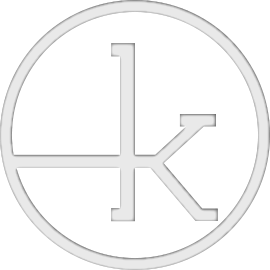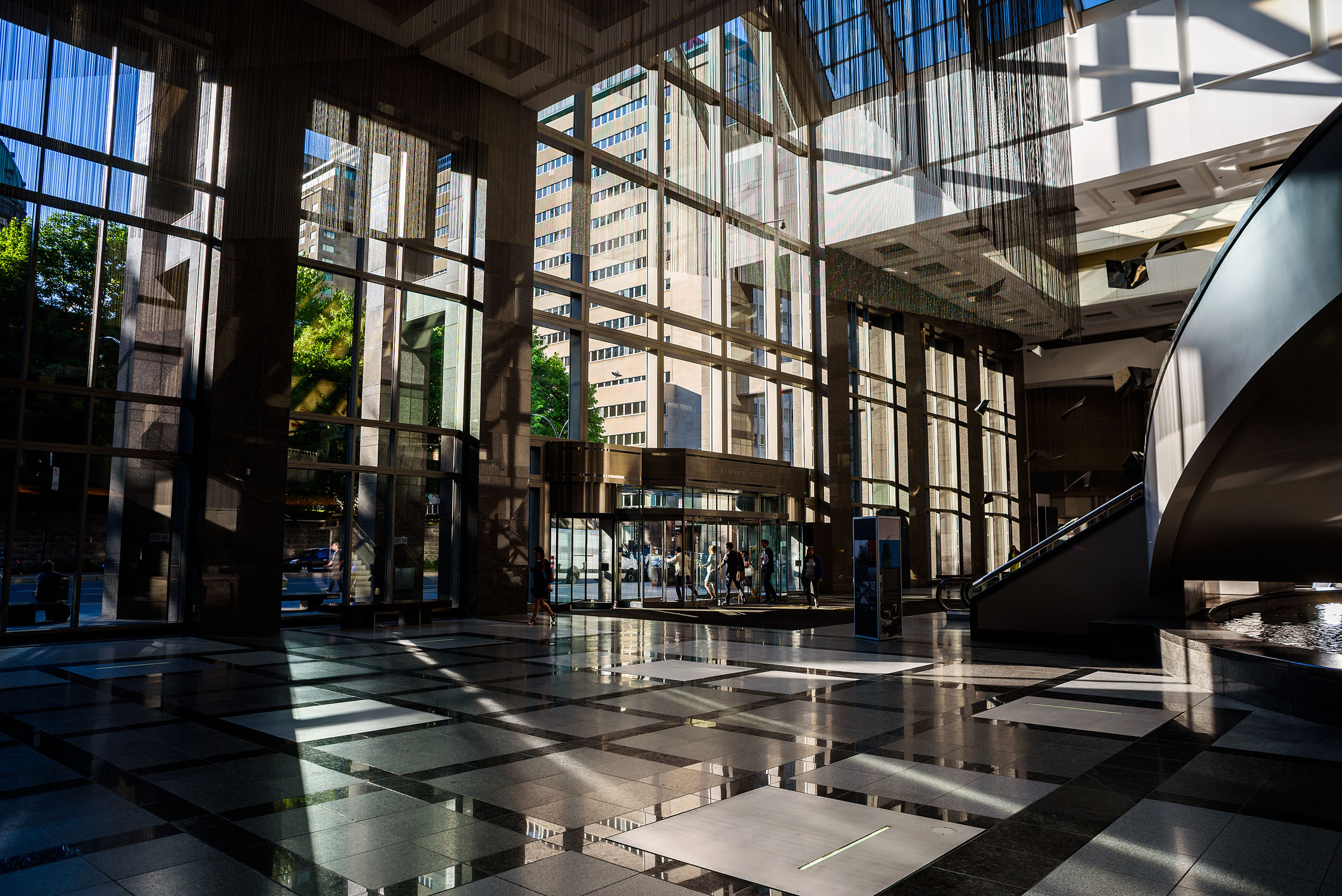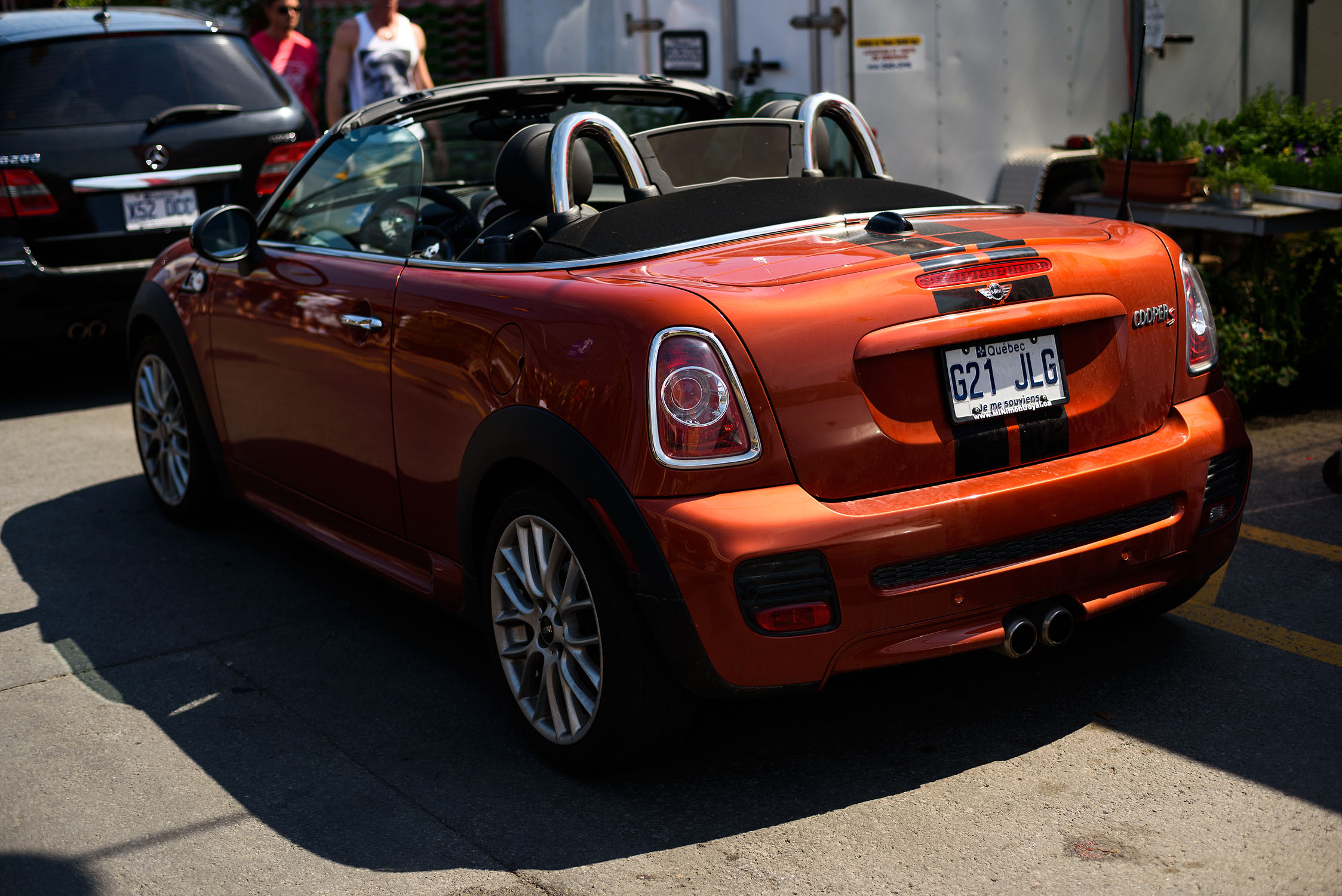Living Along with F-Mount Lenses of Depth Rendition
After the discovery of what lens attributes lead to great 3d pop (element count, microcontrast), I’ve started a sizeable collection to help me further understand and enjoy this newfound aesthetics. I’ve started with Ai/Ai-S era and AF-D lenses, then Voigtlander Zeiss lenses to reach max micro-contrast levels, then AF-S G lenses to round up the lowlight micro-contrast collection. I mostly focused on the focal lengths I’d most likely use. While the Ai/Ai-s and AF are true value gems, the AF-S G, Voigtlanders and the Zeisses were obviously more pricey. By the first year, I would have acquired 24-35-40-50-58-85-105-135 focal lengths, enough to cover most of my photographic needs. On year 3 now and things have never been better. (I apologize for the randomness of the pictures, there's just so much to share! blah.)
How do you find them?
Used camera store in Osaka Umeda
My lens acquisition process was somewhat of a logical one. I must say that the mirrorless and sharpness craze has greatly helped driving the price down since these are, according to the internet, "obsolete" lenses.
Check the lens specs. Element count usually does the trick
Check the lens' flickr group page to cross reference specs and results. If the images portray some depth rendition, go to step 3
Assess how useful this lens would be in the current lineup
Check classified local ads for the lens. You can even extend your search to cover the whole country assuming you're ready to reassure the seller through phone calls and pay for shipping via wire-transfer.
If you can't find the lens on local ads, it's time for some ebay search. As long as lens comes from an ebay seller from Japan (not ANYWHERE ELSE), you can be sure that the item description is reliable.
Compare prices between an ebay store from Japan and local ads, then make purchasing decision. When looking at lenses from Ebay Japan, get Very Good or Excellent lenses. If the store mentions "it has dust, but doesn't affect pictures", believe it!
TRAVEL TO JAPAN. I'm serious. These guys still keep their used lenses in "like new" condition and you can buy them off tax free at a lower price than anywhere else in the used market (like... a Zeiss Distagon 35mm f2 ZF.2 for 720$ CADs... like what?!)
When given the choice of AF or AF-D, always go for AF-D. The choice between Ai and Ai-S is more delicate since they are really the same lens without much benefit.
How do you work with them?
Best 50mm, Best daylight AF 50mm, Best night time AF 50mm
Simple, I usually select my lenses according to these steps, then narrow down to the optimal lens.
Type of light
Daylight/Single-Dominant-Lighting/Controlled lighting (Ai, Ai-S, AF-D, Zeiss, Voigtlander)
Still subject/Very Predictable (AF/AF-D primes and zooms, Ai/Ai-S primes possible)
Human (Zeiss primes)
Artificial (Voigtlander primes)
Product/Very close up (MACRO primes)
Moving (AF/AF-D primes and zooms, AF-S G primes, AF Zooms too)
Staged/Predictable (AF-D, AF-S G primes)
Erradic/Unpredictable (AF/AF-D/AF-S zooms)
Night/Multiple erradic point source lighting + in need of round bokeh (AF-S G primes and zooms)
Staged/Predictable (AF-S G/modern primes)
Erradic/Unpredictable (AF-S/modern zooms)
As such, I end up carrying a set of daylight and night time lenses with me on trips and build my outing bag accordingly. At times, I'd pick up some AF-D primes then small Ai/Ai-S slow aperture telephotos. Other times, it will be an all AF-S G affair when going out at night. I'll always bring a wireless trigger and a tiny Godox 350 flash + magmod + maggel (mostly full CTO) + magsphere to control my lighting a little bit. It's all about maximizing results and reducing computer retouching time.
How's the life?
Zeiss Planar 50 1.4 ZF.2
You get closer in image fidelity to the captured content. The lenses become so transparent that they draw more with their rich color transmission than with their acuity. I wouldn’t go as far as saying that the lenses are as absolutely sharp as modern lenses but the tradeoff for losing this marginal “100% zoomed in” pixel detail in favor of a blast of micro-contrast and color is worth it.
I start to close the aperture a lot more, I try to have the lens draw more depth into anything I frame. This alone improves my ability to work with the various subjects spread at various distances from me. I would start matching the photograph’s depth of field with how my eyes would interpret instead of trying to blur every background I see then control the out of focus regions for them to transition off the subject while still keeping the context.
Nothing really gets close to the way these interpret single dominant lighting circumstances: studio flash, sunrise, sunset, noon sun, overcast flat. These micro-contrast beasts just draw with authority with such high tonal transmission. I’m rarely fearing hard or flat lights as much as I used to when using lenses that were just sharp. It really build a lot of confidence in my ability as a story teller since every image carries as much information as I witnessed with my eyes.
The lenses favor life and street photography so well which makes them also perfect for travel photography where I love to suck in most of the vibes of the locations rather than, once again, blur them out crazy.
I know my flickr account is already full of examples of the depth rendition lens life but here are some snippets of it.
And, how has you view changed over time?
Nikkor AF-S 24-70mm f2.8G ED + Nikkor AF 28-70mm f3.5-4.5, Two amazing examples of zoom with great depth rendition.
At the beginning, I wanted nothing to do with plastic aspherical hybrid or ED elements. Then, I quickly learned to trust my eyes more instead of numbers: yes, low element count of pure glass usually leads to good 3d pop, but the exceptions are plenty and there are strokes of genius occurring from time to time (like some Tamrons, some Zeiss Milvuses), mostly from wide angles and zooms (yes some are quite miraculous). Also, every optical brand has different glass compounds so some will be able to get away with more elements too. Thankfully, I have a good foundation of competent lenses as references to comparisons. I'll definitely be on the lookout for modern lenses that still carry great rendition.
But, what’s the catch?
Nikkor AF 85mm 1.8D
Like I mentioned before, you quickly learn that most of the lenses will portray some technical weaknesses when shot at maximum aperture wether it is strong outlines around bokeh ball (circle of confusion), haze, fringing, chromatic aberration, sharpness falloff or intense vignetting (mostly on wide primes). These exists because of the lack of optical correction from the low element count and inner-element light bouncing. While such problems don’t really affect daylight shooting, they become apparent at night where multiple light sources can haze the lens as well as add coma on the edges and high contrast situations can have fringing and chromatic aberration show up. Your best bet is to close down the lens and keep those weaknesses under control. In the end, you’re still getting tons of depth drawing so it’s a compromise you’ll have to make.
I usually end up switching to AF-S G primes for night shooting since they provide more correction while still balance well with depth drawing.
Onwards
Nikkor Ai 200mm f4
Now that my eyes have awoken, I’m still quite hooked on the depth drawing ability of lenses more than their ability to deliver sharp pictures (because honestly, sharpness already happens if subject is within depth of field and frozen with the proper shutter speed). I start looking at how other brands are approaching this feature: fuji, sony, leica, pentax, samyang, tamron, sigma, olympus etc… I’m at a pleasant level where I can differentiate aesthetics, recurring signature looks between optical configurations.
I’ve searched for lenses for my non-nikon friends to help them reach the ability of my camera system. I’ve even looked for smaller and lighter zooms that possibly draw well without the need of being of fast aperture to further integrate them into the everyday life instead of always carrying many primes with me or a heavier zoom. I usually cross-reference their optical composition with sample images from flickr lens group, explorecams pages to have a decent idea of how they perform. It’s quite nice to appreciate that.
You become quite the outcast in most lens recommendation conversations which usually emphasizes sharpness and bokeh. I believe it’s somewhat similar to audio high fidelity: some currently unmeasurable metric that influence perception of product are often overly exploited as elitist snake oil to boost the cynicism of the blind since they get hurt by not getting into some “cool club” of those who passed the test and use numbers to defend their objectivity.
Upwards
Sony RX100ii Zeiss Vario-Sonnar 28-100 1.8-4.9
I’ve quickly learned to dismiss such negativity and continue my personal journey of enjoying the use of such instruments. The more good work I produce with such knowledge, the more this phenomenon gets recognized. The more my eyes get trained, the more I can even appreciate some more modern lenses and zooms that are, by some stretch of miracle, able to portray a hint of depth drawing (because despite the amount of cultists from the 35mm focal length church jamming that one-prime-does-all idea into our heads, we also need good zooms too, especially for reportage). Stepping back, I start to appreciate how using a camera system that supports nearly all generations of lens design without drastically affecting ergonomics or the need of a flange adapter. It’s been a true blessing in this lens journey and it shall continue.
The F-Mount list so far (yes finally!)
Just living with fire
While I should definitely write a single blog article for every of these wonderful lenses that I own, I believe it's better just to get the information out effectively this way so that you can also go on again and try them! I've also written quick comments on the ones I no longer own. This list will be continuously updated
Ai/Ai-S (awesome for compact awesome telephotos)
100mm f2.8 series e - 4 elements - adapted on my fuji
AF (daylight/single-dominant-lighting AF gods)
24mm f2.8D - 9 elements
28-70 f3.5-4.5 - 8 elements (1 plastic asph) (both D and non-D version are same)
35mm f2D - 6 elements
60mm 2.8D - 8 elements
105mm f2DC - 6 elements
180mm f2.8D - 8 elements (1 ed) (any version is great but do buy the last one with golden letters and rough barrel texture)
300mm f4 - 8 elements (2 ed) (there's no D version)
AF-S G (high optical correction for night/multi-point-source-lighting)
20mm 1.8G ED - 13 elements (2 ED, 2 asph, nanocoated)
24-70mm 2.8G ED - 15 elements (3 ED, 3 asph, yikes miracle!)
28mm 1.8G - 11 elements (2 asph, nanocoated)
Nikkor AF-S 50mm 1.8G - 7 elements (1 asph) - Pretty much an anomaly of a lens. It renders very well, better than all 50mm of the Nikon F-Mount. It does have the quirks of having a hybrid aspherical lens which may make colors slightly off but not enough to counterweight the huge benefits of being close to my zeiss planar.
Tamron (best modern lenses on the market, great correction-microcontrast balance)
Tamron 45mm f1.8 VC SP
Tamron 85mm f1.8 VC SP
Tamron 70-200mm f2.8 VC SP G2
Voigtlander SLii (best at BW, best closed down, best on artificial stuff and non-human)
40mm f2 ultron - 6 leaded elements
Zeiss ZF.2 (best at colors, class leading bokeh, best on humans)
50mm f1.4 planar - 7 leaded elements
Considering acquisition
Nikkor AF 85mm f1.4D - Almost beats the Zeiss 85 1.4 and has AF
Nikkor AF-S 58mm 1.4G - Owned it once, sold it, now just wanting it for the 1.4 effect
Tamron 35mm f1.8 VC SP - Might replace the 35f2d
Interesting but not in my priority list of acquisition
Sony RX100-V
Nikkor Ai 85mm f2
Nikkor Ai-S 50mm 1.8 pancake
Nikkor AF 135mm f2DC
Voigtlander Color-Skopar 20mm f3.5 SLII
Voigtlander Color-Skopar 28mm f3.5 SLII
Zeiss Distagon 18mm f3.5 ZF.2
Zeiss Distagon 28mm f2 ZF.2
Zeiss Distagon 35mm f2 ZF.2
Zeiss Distagon 35mm f1.4 ZF.2
Zeiss Milvus Distagon 50mm f1.4 ZF.2
Sold (short reason mentionned) but recommended
18-35G - 20 1.8g is better
24 1.8G - I already own the 20g and the 28g
24mm f2.8 ais - 9 elements - I own the AF-D version
50mm f1.8 series e - 6 elements - Zeiss Planar 50 1.4 is better.
50mm f1.8 ai - 6 elements - Zeiss Planar 50 1.4 is better.
50mm f1.4 ais - 7 elements - Zeiss Planar 50 1.4 is better.
50mm f1.4D - 7 elements - Replaced by Tamron 45VC and 50 1.8G
50mm f1.4G - 8 elements - Replaced by Tamron 45VC and 50 1.8G
55mm f2.8 ais micro - 6 elements - My micro 60mm works well enough
58mm f1.4 nokton - 7 leaded elements - Zeiss Planar 50 1.4 is better.
85mm f1.8D - 6 elements - 105DC is better
85mm f1.8G - 9 elements - Replaced by Tamron 85VC
85mm f1.4 planar - 6 leaded elements - Will be replaced by the 85 1.4D
135mm f2.8 series e - 4 elements - No time for it
200mm f4 ai - 5 elements - No time for it
Attempted but resold or gone to recycling (not my kind of lens)
Nikkor AF 24-50mm 3.5-4.5 - too much inner-element bounce, lack of contrast and micro-contrast overall
Nikkor AF 28-80mm f3.3-5.6G - too much inner-element bounce, horrible distortion, horrible bokeh, horrible build quality
Nikkor AF 28-85mm 3.5-4.5 - too much inner-element bounce, lack of contrast and micro-contrast overall, abysmal minimum focus distance
Nikkor AF 28-105mm 3.5-4.5D - useful macro feature, horrible bokeh, not enough micro-contrast, decent sharpness, okay colors.
Nikkor AF 28mm f2.8D - 6 elements - image quality and microcontrast too low, horrible inner-element bounce
Nikkor AF 50mm f1.8D - 6 elements - cheaped out coating, color shifts, poorest performance on the 4-way 50mm battle
Nikkor AF 70-210mm f4-5.6 - 12 elements - too much inner-element bounce, lack of contrast and micro-contrast overall.
Nikkor AF 70-210 f4 - 12 elements - too much inner-element bounce, lack of contrast and micro-contrast overall.
Ricoh GR - 7 elements - bad colors, sub par low light, raw fine pixel halos but sharp lens and decent BW, great camera operation though!
Nikon A (technically not with me) - 7 elements - awesome colors but mediocre mechanical performance.
There you have it! Lets keep shooting!
A lot of you wrote to me with tons of questions and I've been wanting to write a full update on the lens life I have started a while ago. So, here it is. I hope this continues the conversation and keep some of us enjoying such lens culture for longer.
I currently work at a TV and headphones measurement facility so I might attempt to ask a few engineers to help me measure some lens tonality to further explore the ability of a lens to render depth. These are exciting time!Lets go shoot!













